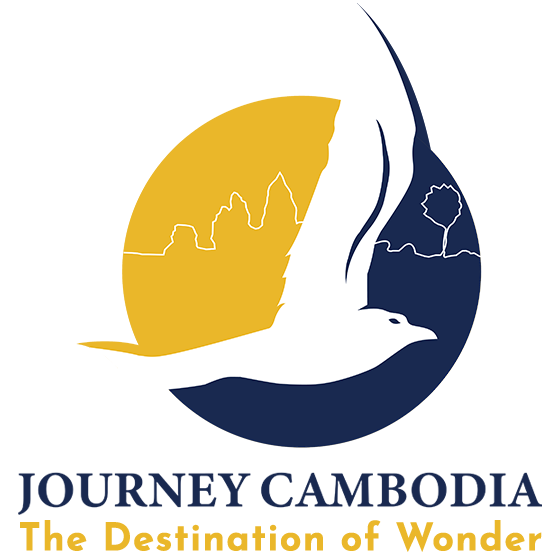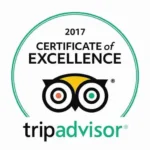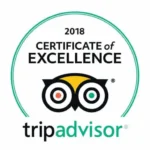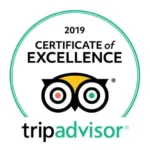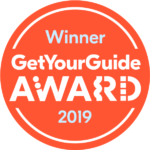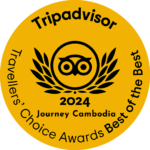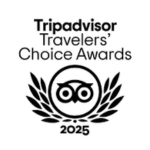Phnom Penh’s Emotional Heritage Sites – Real places. Raw feelings. These stories don’t fade.
Phnom Penh’s emotional heritage sites tell stories that stay with you forever. These places show Cambodia’s tough past in a direct way. Each site holds memories that teach us about human strength. The sites mix pain with learning in ways few other places can.
What Are Phnom Penh Emotional Heritage Sites?
Phnom Penh emotional heritage sites are places where sad events happened during Cambodia’s history. They now serve as memorials and learning centers. Most of these sites connect to the Khmer Rouge regime that ruled from 1975 to 1979.
Cambodia, a beautiful country in Southeast Asia, has faced many hard times. Its capital, Phnom Penh, holds places that show these struggles clearly. These sites help us understand what people went through.
Visiting these places means seeing history up close. It’s not always easy, but it helps us connect with Cambodia’s story. These places make sure we remember what happened.
7 Must-Visit Phnom Penh Emotional Heritage Sites
1. Tuol Sleng Genocide Museum (S-21)
The Tuol Sleng Genocide Museum used to be a school. The Khmer Rouge regime turned it into a prison called S-21. About 18,000 people were kept here. Only seven people survived.
What you’ll see:
- Prison cells kept as they were found
- Photos of prisoners taken by the Khmer Rouge
- Tools used during that time
- Personal items from victims
The museum now has audio guides in many languages. These guides share stories from people who lived through this time. UNESCO named the museum’s papers part of the Memory of the World Register in 2009.
Visitor tips:
- Allow 2-3 hours for your visit
- Come early to avoid crowds
- Get the audio guide for full understanding
- Take breaks if you feel upset
Entry fee: $5
2. Choeung Ek Killing Fields
The Choeung Ek Killing Fields sit about 7.5 km from the city center. This place used to be an orchard. Under the Khmer Rouge, it became a spot where about 20,000 people were killed. Most victims came from the S-21 prison.
At the center stands a glass-sided Buddhist stupa. Inside are more than 8,000 skulls of victims. The skulls are sorted by age and sex. Around the grounds, you can see many mass graves. Some still have bits of clothes coming up from the ground.
What makes this place special:
- Audio tour with stories from both victims and guards
- Walking paths with signs explaining each spot
- Memorial events held each year on May 20
- A small museum with more information
Visitor tips:
- Plan for a half-day visit
- Wear good walking shoes
- Be ready for an emotional time
- Stay on marked paths
Entry fee: $6
Historical Sites in Phnom Penh: 7 Places That Saw It All—And Still Stand
3. Royal Palace of Cambodia
Not all Phnom Penh emotional heritage sites are sad. The Royal Palace of Cambodia shows the beauty that lived alongside hard times. Built in 1866, the palace stands as a symbol of Cambodia’s royal history.
The palace grounds include:
- The Throne Hall
- Silver Pagoda with over 5,000 silver floor tiles
- Beautiful gardens
- Royal living areas
During the Khmer Rouge time, the palace was empty. The king was forced to leave. Today, it shows how Cambodia kept its royal traditions even through hard times.
Our Phnom Penh Royal Palace National Museum Half-Day Tour takes you through this amazing site with expert guides who explain its history.
Visitor tips:
- Cover your shoulders and knees
- Visit in the morning for better light for photos
- Look for the small details in the buildings
- Join a guided tour for deeper understanding
Entry fee: $10
4. National Museum of Cambodia
The National Museum of Cambodia holds the largest collection of Khmer art in the world. The red building was built in 1920. During the Khmer Rouge years, it was left empty and many items were lost.
What you’ll find inside:
- Over 14,000 items
- Art from the Funan kingdom to today
- Bronze and stone sculptures
- Religious items
The museum itself is a story of saving culture. After the Khmer Rouge time, people worked hard to find and fix art that was lost or broken.
Experience this amazing place on our Phnom Penh Heritage and History Tour.
Visitor tips:
- Set aside at least 2 hours
- Look up at the ceiling for bats that live there
- Visit the garden in the middle
- No photos allowed inside
Entry fee: $5
Phnom Penh attractions – You’ll Never See Phnom Penh the Same Way After Spot #6!
5. Wat Ounalom
Wat Ounalom is one of Phnom Penh’s oldest temples. It was built in 1443 to house an eyebrow hair of Buddha. The temple suffered badly during the Khmer Rouge time. Many monks were killed and buildings were damaged.
Today, it serves as:
- The home of the Buddhist patriarch
- A working temple with 44 buildings
- A place for monks to study
- A quiet spot in the busy city
Visiting shows how religion came back to Cambodia after hard times. It’s less visited than other Phnom Penh emotional heritage sites but just as moving.
Visitor tips:
- Dress respectfully
- Speak quietly
- Ask permission before taking photos of monks
- Visit early morning to see monks collecting alms
Entry fee: Free (donations welcome)
6. Independence Monument
The Independence Monument was built in 1958 to mark Cambodia’s freedom from France. Its Khmer architecture style looks like a lotus flower. During the Cambodian genocide, the area around it saw violence and was largely empty.
The monument has become:
- A place for national celebrations
- A reminder of Cambodia’s journey
- A spot to remember those who died for freedom
- A landmark in the city center
At night, the monument lights up in red, blue, and white—the colors of Cambodia’s flag. It stands at a busy traffic circle but feels sacred.
Visitor tips:
- Best viewed at sunset or after dark when lit up
- Cross the street carefully if you want a closer look
- Visit during national holidays to see ceremonies
- No entry inside, viewed from outside
Entry fee: Free
7. Wat Botum
Wat Botum means “Temple of the Lotus Blossoms.” This temple, built in 1442, was where royal family members were cremated. During the Khmer Rouge time, it was used for storage and damaged.
The temple grounds include:
- Several shrine buildings
- A school for young monks
- Beautiful wall paintings
- Cremation stupas for royal family members
Many powerful people in Cambodia’s government were once monks at this temple. It shows how religious places helped rebuild society after the genocide.
Visitor tips:
- Visit in the afternoon when monks are more active
- Look for the wall paintings showing Buddha’s life
- Respect any ongoing ceremonies
- Remove shoes before entering buildings
Entry fee: Free (donations welcome)
Comparing Phnom Penh Emotional Heritage Sites
| Site | Type | Daily Visitors | Entry Fee | Visit Time | Main Feature |
|---|---|---|---|---|---|
| Tuol Sleng Museum | Memorial/Museum | 400-500 | $5 | 2-3 hours | Prison cells and photos |
| Choeung Ek | Memorial Site | 700-800 | $6 | 2-3 hours | Memorial stupa with remains |
| Royal Palace | Cultural Heritage | 1,000+ | $10 | 1-2 hours | Royal buildings and Silver Pagoda |
| National Museum | Cultural Heritage | 800-1,000 | $5 | 1-2 hours | Khmer art collection |
| Wat Ounalom | Religious Site | 200-300 | Free | 30-60 mins | Buddhist center |
| Independence Monument | Memorial | 1,000+ (pass by) | Free | 15 mins | National symbol |
| Wat Botum | Religious Site | 100-200 | Free | 30-60 mins | Royal cremation site |
Planning Your Visit to Phnom Penh Emotional Heritage Sites
Best Time to Visit
The best months to visit Phnom Penh emotional heritage sites are:
- November to February: Cooler and less rain
- Early morning (8-10 AM): Fewer crowds and cooler
- Weekdays: Less busy than weekends
Try to avoid April, which is very hot, and September-October, which can be very wet.
Getting Around
Phnom Penh has many ways to get around:
- Tuk-tuks: Fun, open-air rides that cost $2-5 between sites
- Grab app: Like Uber, but with tuk-tuks and cars
- Hired driver: Most comfortable, about $30-40 per day
- Walking: Good for sites in the central area
Our Phnom Penh Heritage and History Tour includes transport between all the main sites.
Suggested One-Day Tour
Morning:
- Start at the Royal Palace (8:00 AM)
- Visit the National Museum (10:00 AM)
- See Independence Monument (11:30 AM)
Lunch break (12:00 PM)
Afternoon:
- Tuol Sleng Genocide Museum (1:30 PM)
- Choeung Ek Killing Fields (3:30 PM)
This route balances the emotional weight of sites. You start with beauty and end with the harder places.
How to Prepare for Emotional Impact
Visiting Phnom Penh emotional heritage sites can be tough emotionally. Here’s how to get ready:
- Learn some history before you go
- Take breaks when needed
- Talk about what you see with others
- Know it’s OK to feel upset
- Bring water and snacks
Many visitors say these places changed how they see the world. The feelings are hard but worth it for the learning.
Connecting Phnom Penh to Other Cambodia Destinations
Cambodia has much more to see beyond Phnom Penh. Our tours make it easy to connect places:
- Private Journey Between Siem Reap and Phnom Penh City: See the countryside between the two main cities
- Phnom Penh Temple of Angkor: Connect the capital with the famous temples
- Private Journey Between Phnom Penh and Sihanoukville: Go from city to beach
- Kampot Koh Rong Explorer: Add countryside and island time to your trip
Tips for Respectful Visits to Phnom Penh Emotional Heritage Sites
- Dress properly – cover shoulders and knees
- Ask before taking photos, especially of people
- Speak quietly in memorial areas
- Don’t touch displays or remains
- Be careful what you post on social media
These places hold real pain for many Cambodian people. Your respect means a lot.
Personal Reflection: Why These Places Matter
I’ve taken many people to Phnom Penh emotional heritage sites over the years. Each person reacts differently. Some cry. Some get quiet. All leave changed.
These sites do more than tell what happened. They make sure we don’t forget. They show how people can rebuild after terrible things happen.
Want to visit these powerful places with expert guides who know the full story? Contact us to plan your trip that respects both the history and your needs as a traveler.
